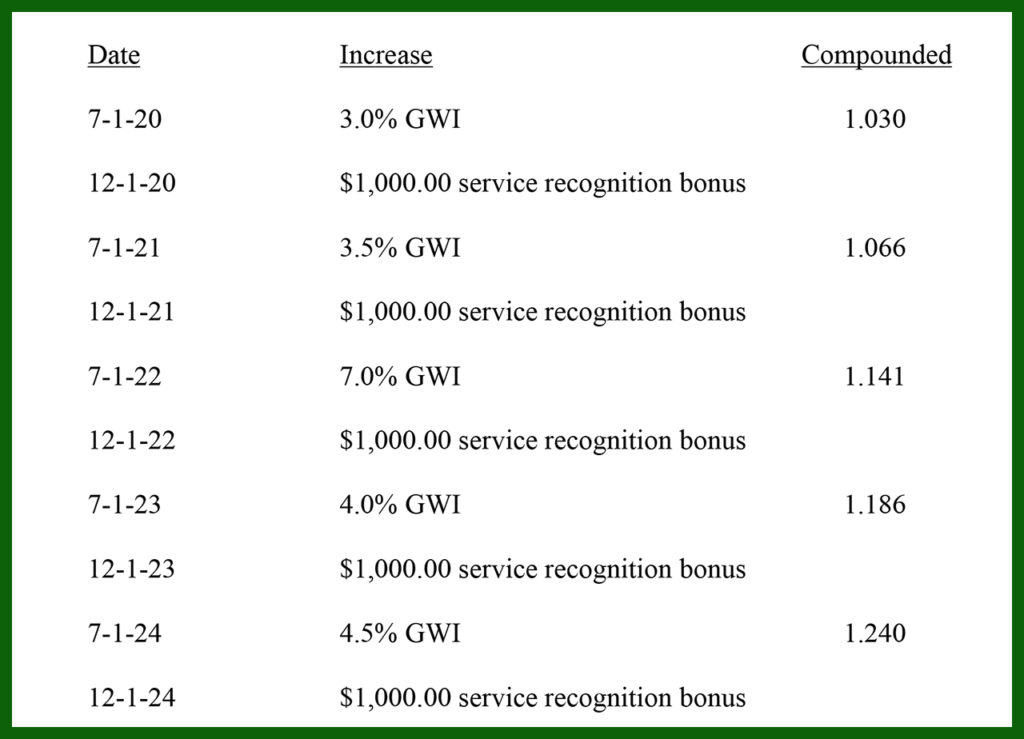
PEB 250 Recommendations ‘Fair and Appropriate’
Written by William C. Vantuono, Editor-in-Chief
SMART-TD photo
Presidential Emergency Board (PEB) 250 on Aug. 16 issued its report with non-binding recommendations regarding wages, benefits and work rules, among numerous considerations, in the now more-than 2½ year old dispute between most major railroads (and many smaller ones) and their 12 labor unions representing some 145,000 unionized rail workers.
“The projections set forth in the record regarding the future economic state of the freight rail industry are positive,” PEB 250 (Chairman Ira F. Jaffe and Members Barbara C. Deinhardt and David P. Twomey) said. “This is reflected in a number of facts, including the projections regarding steadily increasing volume shipped over the next 20 years, environmental and other considerations that provide freight rail with a very favorable comparison to trucking and other modes of transportation, and the projections of Carrier earnings. While not a major factor in our analysis, the record fails to suggest that there are known or likely negative indicators that would urge caution with respect to the ability of the Carriers to meet the costs associated with our recommendations.”
Following are selected recommendations from the PEB 250 Report. The entire, 124-page document is downloadable below:
“The Interplay Between Wages and Health and Welfare Benefits: Money is money. The recommendations concerning payment for health and welfare benefits are directly related to the recommendations concerning base wages in that each form a part of overall compensation. As they have in the past, per capita health care costs are projected to increase much faster than wage costs during the term of this Agreement. A recommendation that significant cost-shifting take place in the design of the Health Plans to shift costs from the Carriers to the employees and their family members would need to be balanced by an even higher wage recommendation. Conversely, the lack of any recommendation to that effect must be considered as well when addressing the propriety of particular wage adjustments. We are not suggesting dollar for dollar linkage. We simply recognize that package considerations are important when gauging the adequacy of overall compensation and recommendations for changes in that compensation as well as in the subparts of that compensation.
“The Recommendations of the Board: After careful consideration of the entire record, we recommend the following wage increases as fair and appropriate in this case:

“This represents a 22.0% nominal wage increase during the term, a 24.0% compounded increase during the term, plus an additional $5,000.00 in service recognition bonus payments. During the term of the Agreement, the service recognition bonus payments are equivalent in value to an additional 0.9% GWI in the first year if carried over into the following years. Any wage recommendation must also take into account the other significant items in the package, both monetary and non-monetary. We are also recommending the following items for inclusion in the Agreement that affect its overall fairness, appropriateness, and value:
“1) One additional day of paid leave, which has both economic value (equivalent to approximately 0.5% GWI in cost) and non-economic value in that it provides additional scheduled paid time off and personal flexibility for employees;
“2) A continuation of the existing Health and Welfare Plan with modest improvements in benefits, but no reductions in benefits or shift in cost-sharing other than the uncapping of the previously agreed-to 15% monthly employee contributions. This is a difficult benefit to value in GWI terms, but there is no dispute that it represents significant and increasing value, both monetarily and non-monetarily, to the Organizations and their members who have historically placed a high priority on maintaining a much richer health plan than most other workers enjoy. These important benefits continue to be provided and received in a tax-free form, rather than shifting costs to employees that would be need to be paid out of after-tax dollars. The maintenance of the existing benefit design also helps to maintain health. It is difficult to put a price on one’s own health or the health of family members.
“3) Appropriate adjustments are recommended to the travel reimbursements for BMWED represented employees working on traveling gangs. This is an item of fairness and quality of life, but also a significant monetary item, equivalent in value to a GWI of 0.7% to all employees.
“4) We remand for further negotiation both the Carriers’ requests regarding automated bidding and scheduling, self-supporting pools, pool regulations, and extra boards, and those of the BLET and SMART-TD relative to the issues of scheduling (including the scheduling of scheduled days off for unassigned road service). If no agreement can be reached, those disputes are to proceed to binding arbitration. The Board hopes that this may prove to be a ‘win-win’ in which the Carriers obtain a more efficient and reliable system for manning the locomotives, with both operational benefits and cost savings, and employees will obtain preferred schedules with more control over their personal lives when not otherwise scheduled. This, too, is difficult to quantify in terms of GWI equivalence, but is a “plus” when viewed in the context of the overall package.
“When one adds the value of those items in the package that can readily be determined, the wage package is worth 22.0%/24.0% compounded and the remaining items in the package that may be readily costed have a combined additional value of 2.1% GWI. We recognize that there are any number of possible agreements that may in combination serve as a fair and appropriate resolution of the instant dispute. Our responsibility in this matter is to act as honest brokers and to recommend terms for an Agreement that are fair and reasonable, both in the aggregate and to each significant term, given all of the relevant current circumstances. We believe that our proposed resolution mirrors outcomes that could have been reached through good faith, arms’ length collective bargaining and that will prove to be acceptable to all Parties and their respective constituents. We hope that our recommendation meets all of these criteria and that it may form the basis for the Parties to adopt it or, failing adoption, to engage in additional discussions that ultimately result in agreements that are approved and ratified.”
AAR STATEMENT
“The proposal would provide immediate pay increases and an average employee payout of more than $11,000 upon ratification,” said AAR President and CEO Ian Jefferies. “President Biden’s PEB issued recommendations that should set the framework for a negotiated agreement between railroads and unions The recommendations would provide 24% compounded wage increases by 2024, with 14.1% of those increases effective immediately, along with additional service recognition bonuses totaling $5,000 over the course of the contract. An agreement based on these terms would lead to the largest general wage increase in nearly 40 years.
“While the Biden PEB’s recommendations markedly exceed the rail carriers’ proposal, they provide a useful basis to reach a resolution. In the interests of all rail stakeholders, now is the time for railroads and their unions to reach a contract. The industry is prepared to propose agreements based on the PEB’s recommendations to provide our employees with long overdue pay increases and avert rail service interruptions.”
NCCC STATEMENT
The National Carriers Conference Committee (NCCC), which represents the freight railroads in national collective bargaining, said, “The PEB’s recommendations would increase wages by 24% during the five-year period from 2020 through 2024, with a 14.1% wage increase effective immediately. The recommendations also include five annual $1,000 lump sum payments, adjustments to health care premiums, and limited changes to work rules. A portion of the wage increases and lump sum payments would be retroactive, resulting in more than $11,000 on average in immediate payouts to employees.
“These recommendations, if implemented, would include the most substantial wage increases in decades—with average rail worker wages reaching about $110,000 per year by the end of the agreement. When health care, retirement, and other benefits are considered, the value of rail employees’ total compensation package, which already ranks among the highest in the nation, would average more than $150,000 per year.
“Though the recommended wage terms significantly exceed those proposed by the carriers in this round and are far above those contained in prior rail labor settlements, it is in the best interests of all stakeholders—including customers, employees, and the public–for the railroads and rail labor organizations to settle this dispute and prevent service disruptions. Accordingly, the railroads are prepared to meet with the rail unions and reach agreements based on the PEB report without delay.”



